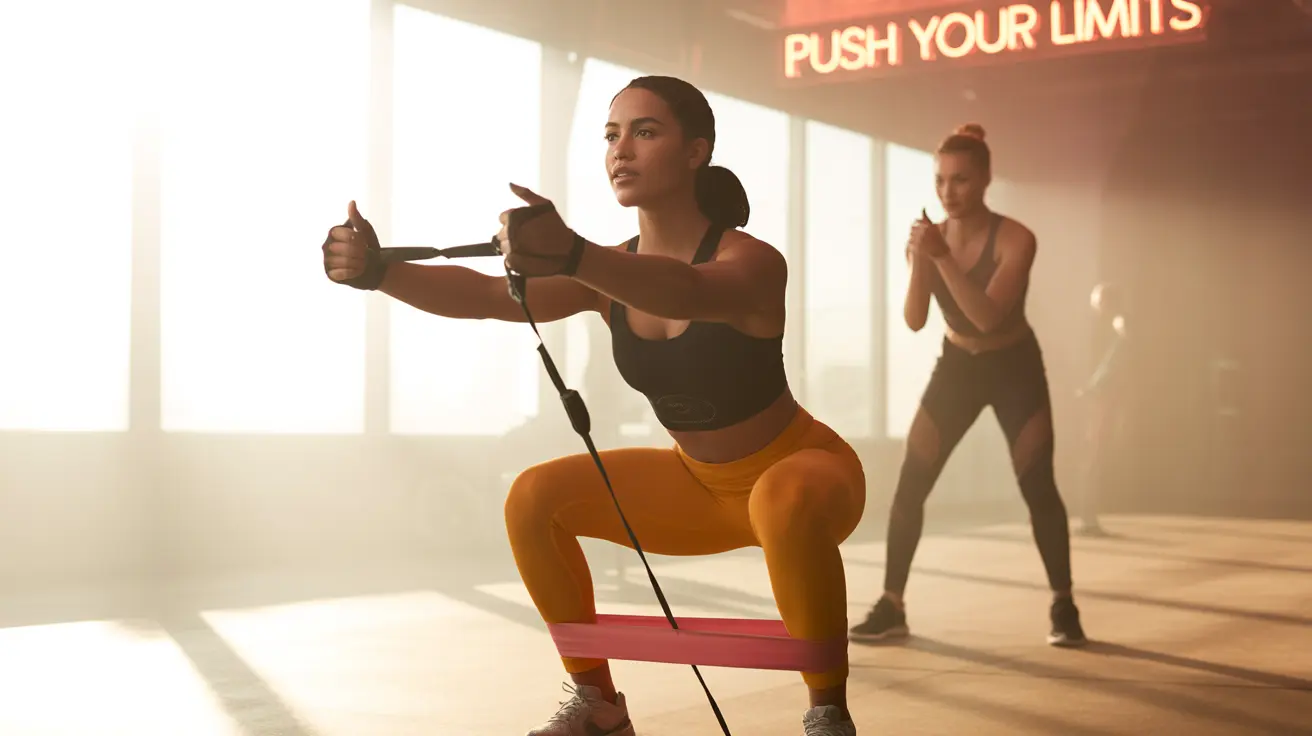Resistance band squats are a highly effective lower body exercise that combines the foundational movement of traditional squats with the added challenge of elastic resistance. This versatile exercise can help you build strength, improve mobility, and enhance your overall fitness level, whether you're working out at home or in the gym.
Understanding how to properly perform resistance band squats and their numerous benefits can transform your lower body workout routine. Let's explore everything you need to know about this powerful exercise variation.
Understanding Resistance Band Squats
Resistance band squats add variable resistance to the traditional squat movement, creating tension throughout the entire range of motion. This modification helps target key muscle groups more effectively while providing a safer alternative to heavy weights for many individuals.
Primary Muscle Groups Targeted
When performing resistance band squats, you'll engage multiple muscle groups simultaneously, making it an excellent compound exercise for lower body development:
- Quadriceps
- Hamstrings
- Glutes
- Core muscles
- Hip flexors
- Calves
Proper Form and Technique
Executing resistance band squats with proper form is crucial for maximizing benefits and preventing injury. Follow these steps for correct form:
Setup
- Position the resistance band under your feet
- Hold the ends of the band at shoulder level
- Stand with feet shoulder-width apart
- Keep your chest up and core engaged
Movement Execution
- Begin the descent by pushing your hips back
- Lower your body as if sitting into a chair
- Keep your knees aligned with your toes
- Maintain a neutral spine throughout the movement
- Push through your heels to return to standing
Benefits of Resistance Band Squats
Incorporating resistance band squats into your workout routine offers several unique advantages:
Strength Development
The variable resistance provided by the band increases tension as you move through the exercise, helping to build strength in a way that differs from traditional weighted squats.
Joint-Friendly Exercise
The elastic resistance creates less impact on your joints compared to heavy weights, making it an excellent option for those with joint sensitivities or during rehabilitation.
Improved Form
The band's resistance naturally encourages proper form and helps maintain tension throughout the movement, promoting better technique and muscle engagement.
Programming Guidelines
To achieve optimal results with resistance band squats, consider the following recommendations:
- Beginners: 2-3 sets of 12-15 repetitions
- Intermediate: 3-4 sets of 15-20 repetitions
- Advanced: 4-5 sets of 20-25 repetitions
Frequently Asked Questions
What muscles do resistance band squats target and how do they benefit lower body strength?
Resistance band squats primarily target the quadriceps, hamstrings, glutes, and core muscles. They benefit lower body strength by providing constant tension throughout the movement, which helps build muscle endurance and power while improving stability.
How do you properly perform resistance band squats for maximum muscle activation and safety?
To properly perform resistance band squats, stand on the band with feet shoulder-width apart, hold the ends at shoulder level, and maintain an upright chest while lowering into a squat position. Keep your knees aligned with your toes and push through your heels to stand up.
Are resistance band squats safe for people with knee or lower back pain compared to regular squats?
Yes, resistance band squats are generally safer for people with knee or lower back pain because they create less compressive force on the joints compared to weighted squats. The band provides controlled resistance that can help maintain proper form and reduce stress on sensitive areas.
What are the advantages of using resistance bands during squats versus doing bodyweight squats alone?
Resistance bands add progressive resistance throughout the movement, increase muscle tension, and help maintain proper form. They also provide greater muscle activation compared to bodyweight squats alone, leading to better strength gains and muscle development.
How often should I do resistance band squats to see improvements in muscle tone and strength?
For optimal results, perform resistance band squats 2-3 times per week with at least one day of rest between sessions. Beginners should start with 2-3 sets of 12-15 repetitions, while more advanced individuals can progress to 4-5 sets of 20-25 repetitions.




